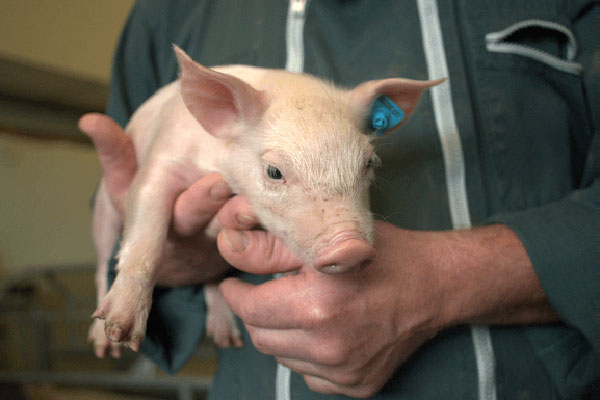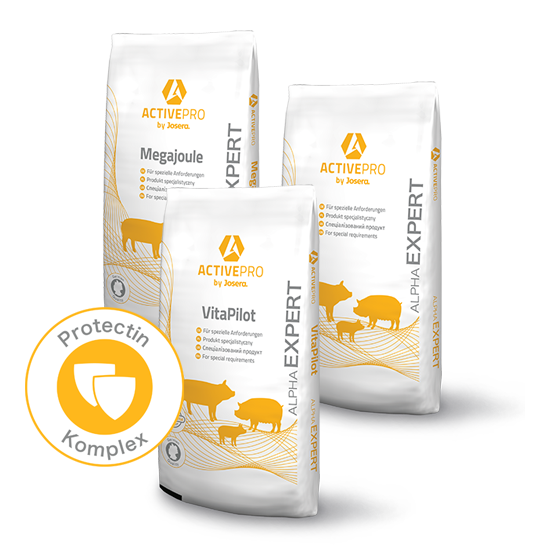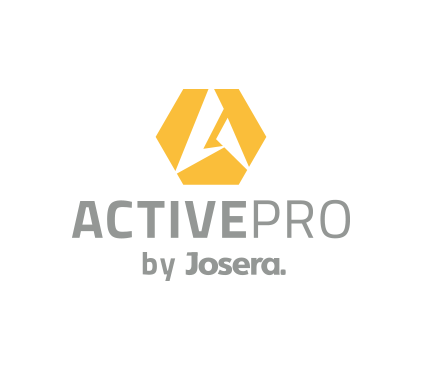Pigs and heat stress – high temperatures do not have to be unbearable
How do pigs tolerate heat?
Farm animals differ not only in species but also in their tolerance to high ambient temperatures. Heat waves with temperatures above 30°C have become more frequent in recent years and this summer, too, neither humans nor animals have been spared.
Heat stress occurs when an animal is exposed to high temperatures for a long time. The body begins to react to this, which is expressed in several symptoms. This should not be underestimated, as the effects of heat stress can damage pig health, reduce production results and even lead to fatalities.
Pigs are particularly susceptible to the occurrence of heat stress. Prolonged high outside temperatures lead to impaired thermoregulation. This is because the animal’s body wants to adapt to the new environmental conditions, which differ from the thermoneutral temperature. The thermal optimum for adult pigs is between 18°C and 25°C. Particularly in spring and autumn, when temperatures fluctuate greatly between day and night, which is also pronounced in a ventilated pig stall, the pig’s body works hard to adapt to the rapidly changing temperatures. But especially in summer, when temperatures above the “comfort zone” have an effect on the body over an extended period, pigs suffer from heat stress.
What happens during heat stress?
By increasing the blood flow through the skin, the body tries to release heat through evaporation. Pigs have few sweat glands and a lot of body fat, which makes it difficult to regulate body temperature via the skin in elevated ambient temperatures. Therefore, pigs make use of opportunities to wallow, i.e. they look for a cool patch of ground and lie down on it to improve heat emission to the environment. Therefore, cooler surfaces such as cast iron grates and concrete are a better solution than bedding. If temperatures rise even further, many animals are also found lying around the drinking troughs or in the faeces area.
Metabolic reactions are disturbed under thermal stress. Feed intake decreases because the body produces even more heat through digestion, and respiratory frequency increases because heat transfer occurs partially through the respiratory tract. More frequent urination is also observed, which is associated with the loss of electrolytes from the body and increased production of manure.
The effects of heat stress on pigs
Pigs affected by heat stress have high blood pressure, hyperglycaemia and disorders relating to water and electrolyte balance. A reduction in feed intake, which is associated with heat stress, limits the daily gains and the general condition of the animals, i.e. it deteriorates the efficiency of production. In addition, the risk of disease increases because the immune system is weakened.
One can also frequently observe undesirable behaviour. The pigs are more aggressive, which, connected with electrolyte imbalance, can lead to cannibalism.
Piglet production is affected by the so-called “summer slump”: the reproductive performance of sows and boars is restricted, which is shown by delayed onset of oestrus, lactation or the death of embryos in sows as well as deteriorated sperm quality and reduced desire to jump in the case of boars.

How to protect pigs from overheating
Meanwhile there are various technical facilities which make it possible to mitigate at least the impact of extreme temperatures. If the airflow rate is sufficiently high, indirect solutions such as supply air cooling with water atomisation have been implemented. Direct wetting of the animals can also at least reduce the temperature felt by them. It is important that air humidity does not rise too high, as the positive effect is reversed and tends to put an additional strain on the circulation.
A reduction in stocking density offers an additional means of alleviating heat stress.
Nutrition in consideration of heat stress in pigs
In addition to ensuring optimal conditions in terms of climate within the pig stall, ensuring proper nutrition and permanent unrestricted access to fresh water play a decisive role in making the heat bearable for pigs.
The following tips will help you in terms of the risk of thermal stress:
- on hot days, reduce the amount of fibre in the ration as far as possible, since the metabolism of crude fibre increases the body’s heat output.
- Limiting indigestible protein while increasing synthetic amino acids for a ration with an optimal amino acid pattern reduces the fermentation of amino acids in the colon, which further reduces heat production via digestion.
- The energy concentration should be increased due to the lower feed intake.
- As feed spoils more quickly at higher temperatures, it is recommended to divide the daily ration into several small individual portions
- It is recommended to postpone the feeding time to hours when the ambient temperature is lower. Food can be moistened with water.
- Lower the water temperature in the water bowl at least a few degrees below the ambient temperature.
ActivePro feed recommendations
- VitaPilot with the active agent package FlavoVital® specifically reduces heat stress by relieving the metabolism and supporting the immune system.
- Reduction of heat stress through metabolic relief: VitaPilotFlavoVital®
- You should also think about feeds that can support feed, nutrient and energy intake: Megajoule increases the energy density in the feed, so that even with reduced feed intake the energy supply is sufficient.
- Heat stress can also affect the intestinal barrier, making it more permeable to harmful substances such as mycotoxins and endotoxins: MycoBond can bind and decompose these toxins so that they cannot cause harm to the animal.
- The Protectin® complex offers relief from metabolic and circulatory stress. Protectin® supports the circulatory system and the function of blood vessels, improves oxygen transport to the tissue and stimulates the immune system in a natural way
- during strong day/night fluctuations and prolonged high temperatures increase the risk of cannibalism: ProtecTailTriotin®





